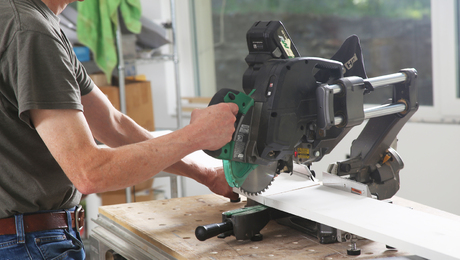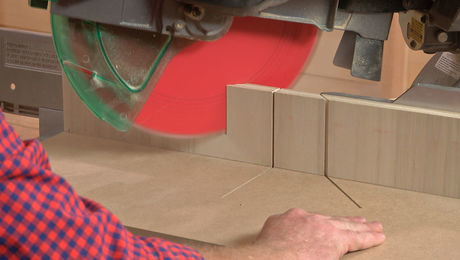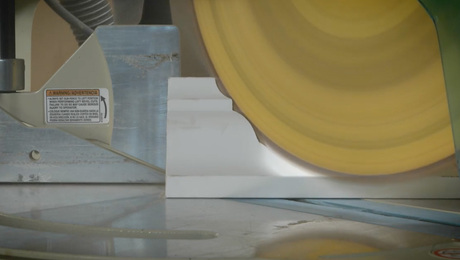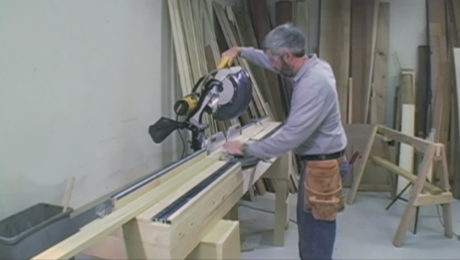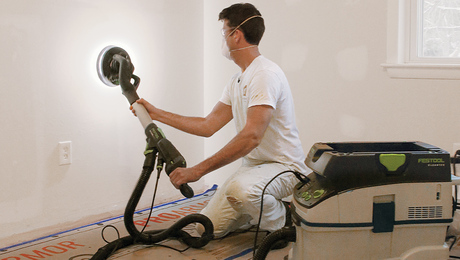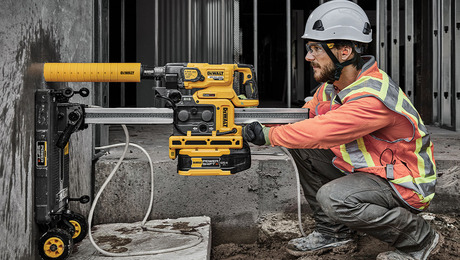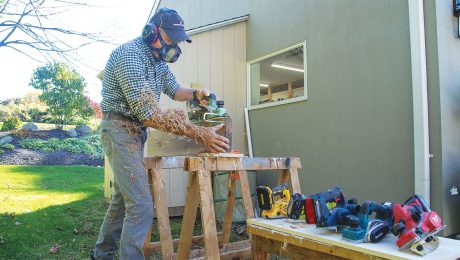Survey of Sliding Compound-Miter Saws
All 12 of these versatile saws crosscut, bevel and miter; which one should you buy?

Synopsis: This tool survey compares the features, specifications, and performance of 12 sliding compound-miter saws with blades ranging from 8-1/2 in. to 12 in. in diameter and priced between $360 and $660.
We admit it. We were blinded by tool lust. We purchased a 10-in. Hitachi sliding compound-miter saw for about $900 shortly after it was introduced in 1990 without first evaluating our needs. Who can resist a new generation of tools? For many years, we used a radial-arm saw and a chopsaw. We figured the Hitachi would replace both, and it has served us well, although we still use the radial-arm saw on occasion.
Sliding compound-miter saws have taken the place of radial-arm saws on many job sites; they offer portability, accuracy and, in some cases, more cutting flexibility than the older saws. Less expensive than a good-quality radial-arm saw, the sliding saws are still high-ticket items that could set you back as much as $700. Their portability has its downside, too. Most probably won’t stand up to repeated collisions with the bottom of your truck bed.
Today, there are a dozen sliding compound saws on the market, and we recently got the chance to try them out. To test the saws, we used them on our own jobs and loaned them to other builder friends to get their input. We chose not to use the manufacturers’ specs but took our own measurements on the saws right out of the box. Although our methods may not be completely scientific, we think that they’ll give you a fair comparison among the saw models.
Bigger blades don’t necessarily mean bigger cuts
When buying one of these saws, most people first consider its ability to cut big stock. After all, the sliding feature is what sets these saws apart from other compound-miter saws. The most surprising thing we found was that the sliding feature of these machines really levels the playing field in terms of crosscut capacity. A saw with an 8 1⁄2-in. blade has about the same crosscut capacity as a saw with a 12-in. blade. All can easily crosscut a 2×12 at 90°, but none can cut much wider than 13 in.
The same is true for bevel capacities. For instance, at a 45° bevel, the Makita 12-in. LS1211 has a cutting-depth capacity of 2 in. left and 1 3⁄4 in. right; the Hitachi 10-in. C10FS has 2 1⁄4 in. left and 1 3⁄8 in. right, a difference of only a fraction of blade diameter. The same holds true for 8-in. and 10-in. saws.
The only advantage we found with the larger blades is a greater depth of cut. For example, the 12-in. DeWalt will cut 4 3⁄4-in. thick stock at 90°; the 8 1⁄2-in. Hitachi can cut only a maximum of 3 in.
For more photos, illustrations, and details, click the View PDF button below:
Fine Homebuilding Recommended Products
Fine Homebuilding receives a commission for items purchased through links on this site, including Amazon Associates and other affiliate advertising programs.
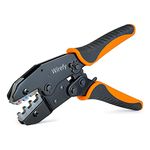
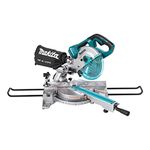
Large-Capacity Lightweight Miter Saw
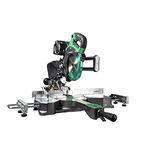
Metabo HPT Compact Cordless Miter Saw (C3607DRAQ4)









